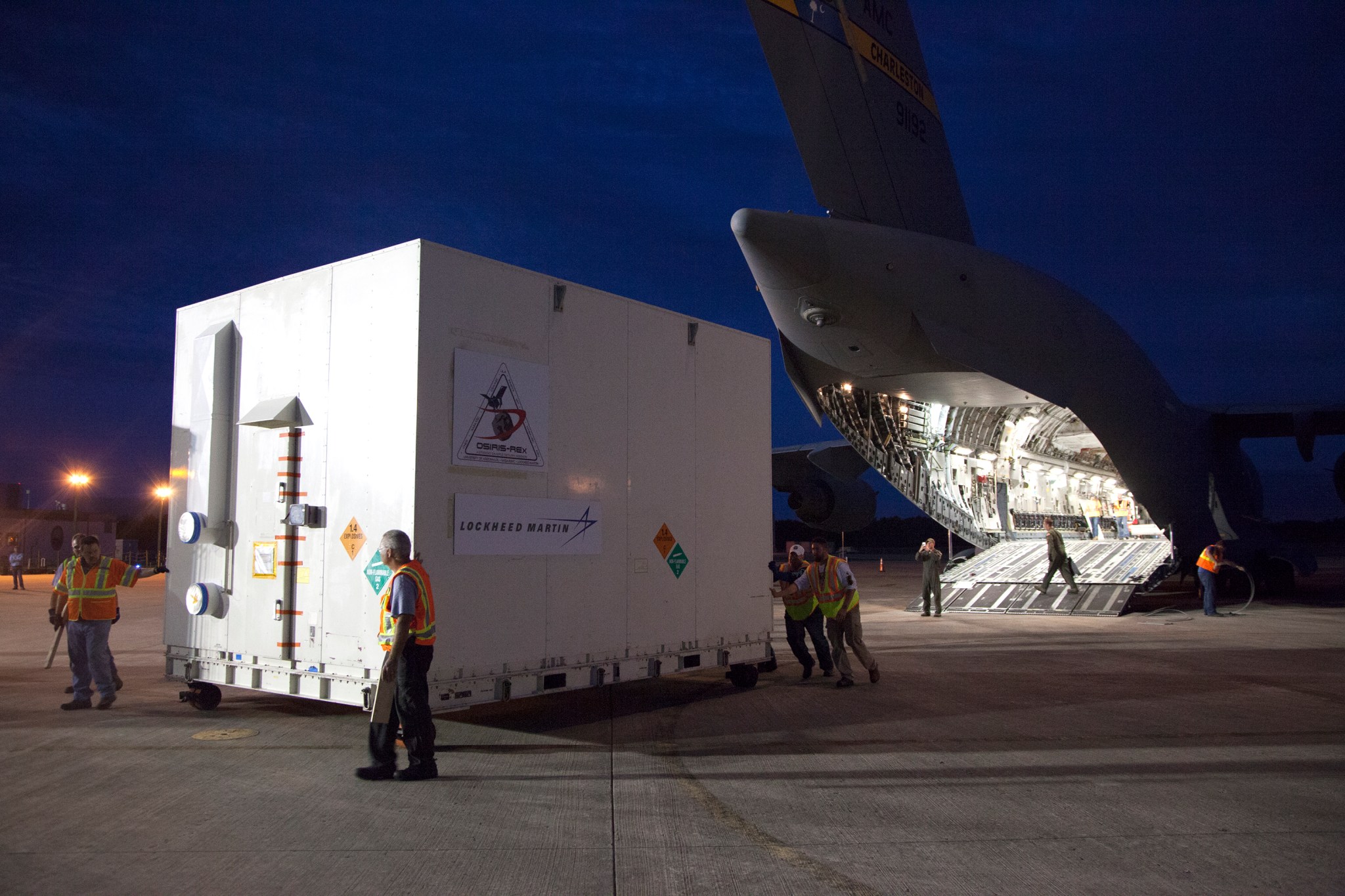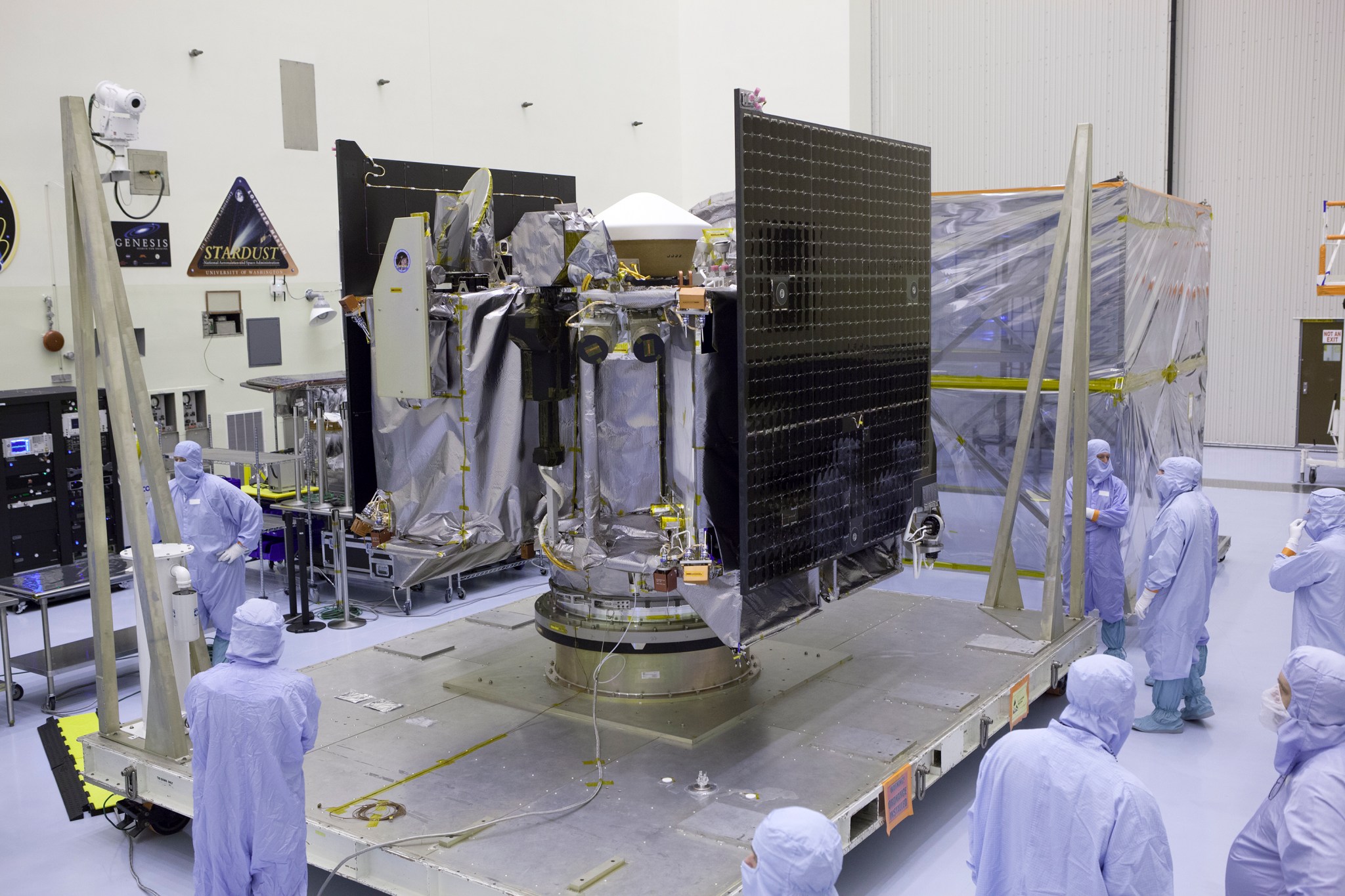The spacecraft that will perform NASA’s Origins Spectral Interpretation Resource Identification Security — Regolith Explorer mission, known as OSIRIS-REx, arrived at Kennedy Space Center from Buckley Air Force Base near Denver on May 20 aboard an Air Force C-17 at the Shuttle Landing Facility.
Since arriving, the OSIRIS-REx spacecraft was pulled from its shipping container May 21 and was connected to a rotation fixture May 23 before beginning spin tests the following two days. A partial solar array deployment test was conducted within the last week.

“This team has done a phenomenal job of assembling and testing the spacecraft,” said Dante Lauretta, principal investigator for OSIRIS-REx at the University of Arizona, Tucson. “As we begin the final preparations for launch, I am confident that this spacecraft is ready to perform its science operations at Bennu. And I can’t wait to fly it.”
OSIRIS-REx is scheduled to launch Sept. 8 at 7:05 p.m. EDT aboard an Atlas V rocket from Space Launch Complex 41 at Cape Canaveral Air Force Station, Florida. The Atlas V has proven a reliable option for NASA’s Launch Services Program, or LSP, the organization that oversees NASA launches and chooses the best launchers for different spacecraft. The mission has a 34-day launch window beginning Sept. 8.
As planned, the spacecraft will reach its near-Earth asteroid target, called Bennu (formerly 1999 RQ36), in 2018. Once within three miles of the asteroid, the spacecraft will begin six months of comprehensive surface mapping. Bennu is about 1,900 feet in diameter or roughly the size of five football fields. The asteroid, a little altered over time, is likely to represent a snapshot of our solar system’s infancy.
The science team then will pick a location where the spacecraft’s arm will take a sample. The spacecraft gradually will move closer to the site, and the arm will extend to collect at least a 2.1-ounce sample for return to Earth in 2023. The mission will help scientists investigate how planets formed and how life began, as well as improve our understanding of asteroids that could impact Earth.
By Frank Ochoa-Gonzales,
NASA’s Kennedy Space Center, Florida





























